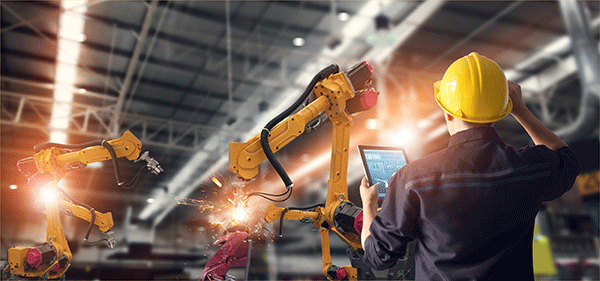One of the most exciting trends over the last few years has been the growth of the Internet of Things, otherwise known as IoT.
This is the name that is given to
developments that allow the internet to integrate devices into a vast, global
network.
Most of us have been exposed to the IoT through our smartphones. We can now connect to our house when we are away, control our air conditioning or even start our car.
This is all possible because the latest generation of fast wireless internet connection can handle the huge information transfer that is required.
However, IoT is not limited just to consumer devices. The potential for the Internet of Things to transform the industrial environment is far greater than the home.
It has even been suggested that this era of data has heralded the beginning of the next industrial revolution – Industry 4.0.
The first industrial revolution was defined by iron and steam, the second by the adoption of modern manufacturing techniques. The third industrial revolution came about with the growth of computing and electronics.
We are now in the very heart of the fourth industrial revolution, brought about by the internet and the power of data that it provides, and which give the Industrial Internet of Things its name.
This new industrial revolution is most obvious in the manufacturing environment. A traditional factory might house many machines, each performing a single task. Industry 4.0 connects these machines into a network that works as a number of layers.
The bottom layers are responsible for the function of the machines themselves, whereas the middle levels are responsible for the control of the whole factory floor. At the highest, or enterprise level, operations are integrated into the software that runs the entire organisation.
This level brings together not just the management of production, but also the supply chain, maintenance and logistic aspects of the operation.
This networking of the different levels allows information to be shared up and down the organisation.
From ensuring that raw materials are where they are needed to collecting data that will help with the maintenance burden of the factory, it is this sharing of data that defines Industry 4.0.
The benefits of these innovations can be seen in several areas.
The ability to plan and control production more closely allows the manufacturer to work more efficiently.
Using the data collected, manufacturers can keep close control of the delivery of raw materials to the factory floor, reducing costs and logistical requirements.
Data can also be used to reduce disruption caused by machine breakdowns by identifying problems before they become significant.
However, possibly the biggest benefit of Industry 4.0 is increased agility and flexibility.
The integration of all levels of the factory allows the manufacturer to respond to current demands and trends much more quickly than traditional methods would allow.
The responsiveness of such a factory creates new problems for product designers. As factories become quicker to respond to demand, consumers will become accustomed to rapid service.
The manufacturer will be under pressure to improve their time to market. Suppliers that can develop and deliver new products rapidly will be best placed to reap the benefits that Industry 4.0 can provide.
The result is that, just as the manufacturing process becomes quicker, the design process will need to be equally responsive.
Tools and services that allow engineers to design the next generation of their products rapidly will allow their company to take full advantage of the Industry 4.0 revolution.
For the engineer, the design process will need to be just as responsive as their factory. We recently looked at how a good Digital Customer Experience (DCX) is vitally important for engineers to reduce the amount of time spent researching and selecting components.
Suppliers who can provide this level of service are allowing their engineering customers to embrace the speed of response that is so important in Industry 4.0.


 Deutsch
Deutsch Français
Français Italiano
Italiano Español
Español Português
Português 中文 (中国)
中文 (中国) 日本語
日本語 Русский
Русский


 18/12/2024
18/12/2024  Digital Parts Catalogs, Engineering Resources, TraceParts News
Digital Parts Catalogs, Engineering Resources, TraceParts News 
